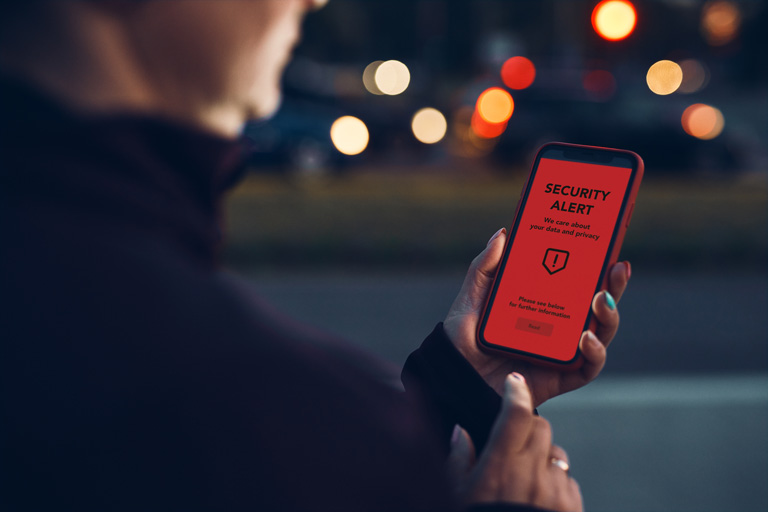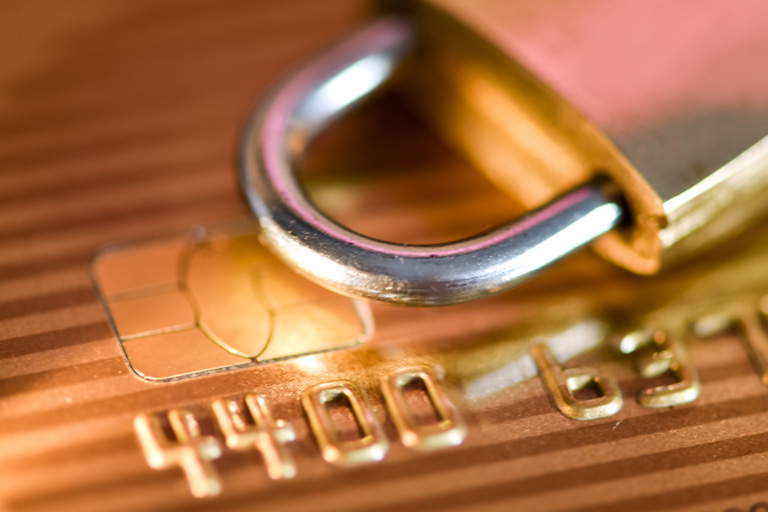Credit card fraud is unfortunately very common, and increasing at that. As many as 65% of credit card holders have been victimized at some point in their lives. A number that equates to 151 million American consumers. And a percentage that is up from 58% the previous year. To make matters worse, 44% of these victims have been subject to such abuse more than once. Which is also up from 35% of such claims the previous year.
A few other noteworthy statistics that bear mention are the fact that the median fraudulent charge has jumped 27% or about $80. And around 12% of consumers had a fraudulent charge being applied to their account every month for several months.
These last pieces of information tell us that a significant number of consumers do not audit their own spending or monitor their credit-related activity. Thus, thieves are leveraging consumer negligence (among other things) to conduct bolder and larger forms of theft.
In fact, as we will see, much about preventing credit card theft begins with consumer vigilance. But first, let’s take a look at what to do if credit card fraud has already happened.
What Should I Do If Someone Stole My Credit Card or Credit Card Number?
If someone has used your credit or debit card to place unauthorized charges, you need to act quickly. Below are 4 steps you should take to secure your sensitive information.
1. Contact the Company that Issued Your Credit Card
The very first thing you should do is call your credit card company and notify them of the unauthorized transactions. They will put a fraud alert on your account, initiate an investigation into the charges, and issue a new card with a new number.
Remember that if you use that particular credit card for any recurring charges, you will have to notify the merchant of the new card number once you get the new card.
As a side note, this is a good example of why it’s beneficial to compile some sort of spreadsheet of recurring charges. Just don’t put any card numbers or references to cards you use (such as the last four numbers) if you keep this information online, like a Google spreadsheet.
2. Change Your Passwords and Pin Numbers
Now it’s time to take some proactive steps towards making sure this fraudulent activity never happens again. Card issuers will recommend that you change passwords and pin numbers for your financial accounts.
Consider changing these passwords and pins to something that doesn’t reflect personal information. Because that may have facilitated the stolen credit card activity the first time around. In fact, some banks or credit card companies will not allow you to use things like your name in a password, or a pin number that correlates to the last four of your social or your birthday.
If you feel the need to store these passwords and pins somewhere, your safest bet is probably good old-fashioned paper, and keep that paper in a safe. Relying on your devices to remember your passwords is convenient, but it can become an easy way for criminals to access your credit card numbers free of hassle.
3. Contact Local Law Enforcement
You may be wondering: “Do I call the police for a stolen credit card?” While you might be fantasizing about a SWAT team showing up at the criminal’s house in a dramatic showdown, that’s unlikely to occur, and even more unlikely to catch on the news. The outcome of white-collar crime is often far less exciting than a highway chase. If you don’t believe it, just ask Martha Stuart.
That said, some officers may be reluctant to invest effort in compiling a police report. Perceiving it as something you (the consumer) will need to iron out with your credit card company. This is especially true in areas that are rife with violent crime or in jurisdictions where officers are not trained in cybercrime. Even so, it’s often important for victims to at least ask to file a police report and it behooves your local police department to do so.
That’s because the fraud on your credit card may be part of a larger problem, such as a crime ring bust in Queens, New York. Where police arrested 111 criminals who made off with $13 million. And probably used some of it to buy the best pizza in the world (not necessarily our opinion, it’s just what New Yorkers are saying).
Another reason you’ll want to file a police report is that the report itself can become a piece of evidence in your attempt to convince your credit card company that you were 100% innocent. It can also help facilitate placing a credit freeze on your credit profile. Which will prevent any new accounts from being opened in your name.
These obvious benefits may not seem to outweigh the initial effort. Especially if the police won’t take a report over the phone. They may ask you to come to a station or have an officer show up at your home to collect the report.
Either way, the more information you can provide, the more comprehensive their report will be. But you should not necessarily have the expectation of seeing any action or even receiving any sympathy.
4. Contact the Credit Reporting Agencies
The next step is to contact credit bureaus. Although each one of the three major credit reporting agencies has a mailing address for receiving complaints or reports about fraud, it may be easier to reach out to them via phone—Equifax (800-685-1111), Transunion (888-909-8872), and Experian (888-397-3742).
The good news is that if you’re requesting a fraud alert to be placed on your file, one credit reporting agency will have to notify the clothes (although you still might want to check). Note that this is not the case if you request a credit freeze (more on that later). Which will necessitate calling each reporting agency separately.
There are different types of alerts that you can request the credit reporting agency to place on your file. But the end effect of each alert is to require creditors to take additional steps to verify your identity in order to check your credit. And since checking your credit is a necessary part of the account opening process, they will be forced to verify if it is truly you attempting to open an account.
These fraud alerts are really geared more towards account openings, rather than fraudulent usage of credit cards you already have. But if fraud has already occurred on one of your existing accounts, there is a decent chance it might happen again in the form of someone opening a new account. Your personal information has clearly been compromised. Placing a fraud alert on your account is a proactive step to prevent the same thing from happening again.

What Are the Different Types of Fraud Alerts?
An initial fraud alert may not be relevant if you’ve already become the victim of identity theft, but it’s good to know about it. This is a step you might take if a company you have some sort of credit or debit account with has announced a data breach—for example, the Target Breach of 2013 when 40 million account records were compromised. Or, you might take this step if you’ve lost a driver’s license, passport, or social security card.
Initial Alert
In any case, an initial alert will stay on your file for one year and allow you to request that a creditor calls a phone number on file with the reporting agency (your number) to verify that it’s really you if someone is opening an account under your name. When you place an initial alert you can also get a free copy of your credit report, in addition to the one free credit report you are entitled to each year.
Extended Alert
Extended alerts are what you would file if your identity has already been compromised. Like the initial fraud alert, it will require that potential creditors contact you via phone (or in person) at the number listed on your file.
However, the extended alert lasts for seven years and also entitles you to two credit reports over a 12-month period. These two reports presumably will allow you to examine your credit history and see if anyone is attempting to open accounts in your name.
As mentioned, there is a decent chance that if a criminal has victimized your credit—and hasn’t been caught—there is a decent chance they’ll try to do it again. Perhaps by opening new accounts in your name.
Security Credit Freeze
The ultimate layer of credit security is a full-on credit freeze or security freeze. This will stop new creditors from accessing your file at all. Which they need in order to check your credit—so that essentially means no new accounts.
As mentioned, you will need to contact each credit reporting agency separately if you decide to freeze your credit. Take note that while creditors will not be able to access your report, it will still be able to be accessed by potential employers, landlords, or insurance providers.
Just keep in mind that a credit freeze will not prevent fraudsters from accessing your existing accounts. And also keep in mind that if you want to apply for a new credit card, personal loan, HELOC, mortgage, or refinance an existing loan, you will need to unfreeze your credit.
Is a Credit Lock the Same As a Credit Freeze?
A credit lock is similar to a credit freeze but with a few differences. While a credit freeze is free, credit locks may have a monthly fee. To be more precise, they’re free with Transunion and Equifax but cost about $10 per month at Experian. A credit lock makes it a little bit easier for potential creditors to access your credit report when you are applying for a loan or credit card.
The exact process and mechanism of the credit lock will vary from bureau to bureau. But they often come with identity theft monitoring services, identity theft insurance, and alerts when information changes on your profile at any of the three reporting agencies. One downside of the credit lock product is that it may require subscribers to receive targeted marketing materials.
Removing Fraud From Your Credit Report
In some cases, credit card fraud may result in significant blights you’d like removed from your credit report. So that it doesn’t impact your ability to get credit in the future. This process is called blocking.
You will need to send each credit reporting agency a few pieces of information, including:
- an identity theft report filed with the Federal Trade Commission
- proof of your identity
- a letter that clearly identifies the fraudulent debts and information on your account
Keep in mind that you cannot use this process to cover up debts that you willingly accrued yourself. And if you alter facts to do so, the block may be rescinded and the information restored to your profile. The same is true if you decided to keep goods, money, or services obtained through fraudulent transactions.
Once the credit bureau receives the necessary documentation (including your identity theft report) they technically have four days to block the information from your account. Of course, you will want to follow up with them to make sure this has been done. The bureau will also notify the relevant creditors that those debts were accrued through fraud and the creditors will not be able to turn them over for collections.
Lastly, take note that if you want to dispute information on your credit report that is not the result of fraud or identity theft, there is a different process. It involves contacting both the agency and the creditor that provided them with the information you’re contesting.

Cleanup on Aisle Internet
Now it’s time to do some damage control everywhere you use your credit card. In the era of online shopping, that may be a tall order to fill. But these online stores may have been the gateway for criminals to victimize you with credit card fraud. It goes without saying that if the fraudulent charge (or charges) in question were at a place you shop, you should change your login information for that store and remove any cards you have on file.
You may also want to change that login information with other stores as well. You can put a decent amount of effort into this by going to your email and searching for correspondence covering topics like “your order” or “shipped.”
Once you have a list of stores you’ve shopped at, you can navigate to these websites, change your login credentials, and remove any card information on file. Moving forward, you should strongly consider shopping online without letting stores save your card number and turn down the offer for your browser to save your card numbers.
Monitor Your Credit and Spending Activity Moving Forward
In addition to knowing how to report credit card fraud, it’s also important to monitor your credit moving forward. There are certain steps you can take to affect credit card fraud prevention, such as becoming savvy about types of fraud.
For example, some fraudsters are installing a skimming device at the gas pump. This type of card skimmer might also be installed at the POS terminal inside the gas station convenience store—a form of identity theft that is on the rise. Knowing about card skimming can lead you to make better choices about where you pump for gas and circumnavigate this risk entirely.
Another useful strategy for avoiding fraudulent charges ab initio is to look at your credit card (or debit card) statement every month. It’s easy to toss this piece of paper in the trash once you pay your bill (for credit cards), but you might be missing out on fraud charges without knowing.
If a criminal sees they can get away with making a small online purchase here and there, they might run your card for a larger transaction, leaving you with a mess to clean up later. In fact, if you can look at your statement every day or every few days, that’s even better.
Many banks and credit card companies have apps you can download on your phone to periodically review your charges, in addition to spending and budgeting tools. The best defense is a good offense, as they say. Monitoring your credit, keeping your personal information secure, and being aware of how scammers operate can help you avoid having to Google things like: how can I report a scammer to the FBI (although it might provide some interesting reading).

How Does Credit Card Fraud Impact Business Owners?
The consequence of fraud can also impact business owners, so it’s good for them to proactively be involved in credit card fraud detection. When a consumer asks themselves—what is this charge on my credit card—there’s no telling if they’ll contact the merchant directly. Or if they will contact their bank or card company first. If they contact their financial institution, that’s going to result in a chargeback for the merchant.
Not only do chargebacks cost a lot more than refunds, but they can ruin merchant reputation with payment processing companies to the point where they’ll be labeled a high-risk merchant. For these reasons, it’s good for merchants to work with a payment processor who can offer security procedures like encryption and tokenization around customer and client payments.
To contact sales, click HERE. And to learn more about ECS Payment Processing visit Credit & Debit.
